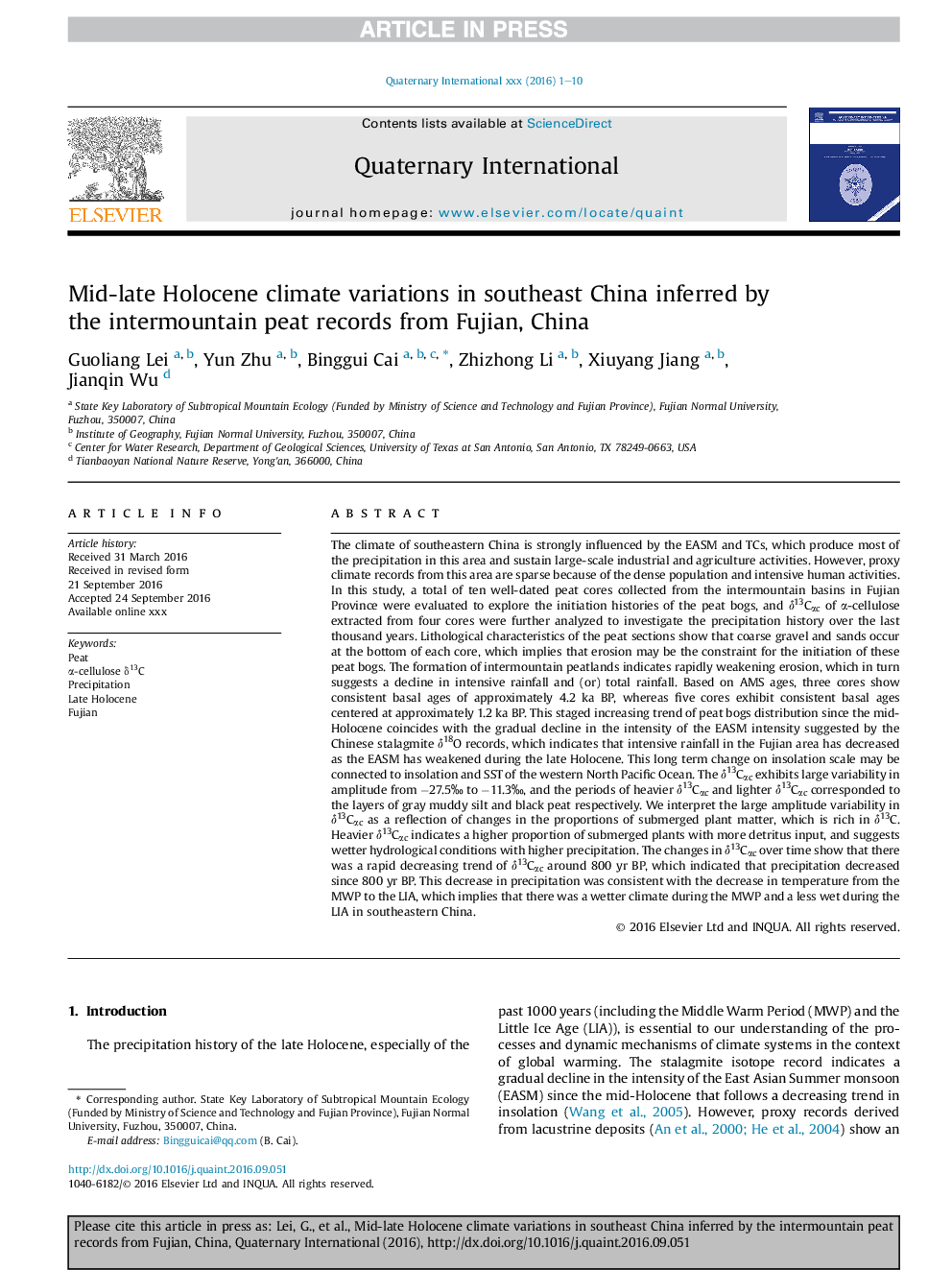| Article ID | Journal | Published Year | Pages | File Type |
|---|---|---|---|---|
| 5113115 | Quaternary International | 2017 | 10 Pages |
Abstract
The climate of southeastern China is strongly influenced by the EASM and TCs, which produce most of the precipitation in this area and sustain large-scale industrial and agriculture activities. However, proxy climate records from this area are sparse because of the dense population and intensive human activities. In this study, a total of ten well-dated peat cores collected from the intermountain basins in Fujian Province were evaluated to explore the initiation histories of the peat bogs, and δ13Cαc of α-cellulose extracted from four cores were further analyzed to investigate the precipitation history over the last thousand years. Lithological characteristics of the peat sections show that coarse gravel and sands occur at the bottom of each core, which implies that erosion may be the constraint for the initiation of these peat bogs. The formation of intermountain peatlands indicates rapidly weakening erosion, which in turn suggests a decline in intensive rainfall and (or) total rainfall. Based on AMS ages, three cores show consistent basal ages of approximately 4.2 ka BP, whereas five cores exhibit consistent basal ages centered at approximately 1.2 ka BP. This staged increasing trend of peat bogs distribution since the mid-Holocene coincides with the gradual decline in the intensity of the EASM intensity suggested by the Chinese stalagmite δ18O records, which indicates that intensive rainfall in the Fujian area has decreased as the EASM has weakened during the late Holocene. This long term change on insolation scale may be connected to insolation and SST of the western North Pacific Ocean. The δ13Cαc exhibits large variability in amplitude from â27.5â° to â11.3â°, and the periods of heavier δ13Cαc and lighter δ13Cαc corresponded to the layers of gray muddy silt and black peat respectively. We interpret the large amplitude variability in δ13Cαc as a reflection of changes in the proportions of submerged plant matter, which is rich in δ13C. Heavier δ13Cαc indicates a higher proportion of submerged plants with more detritus input, and suggests wetter hydrological conditions with higher precipitation. The changes in δ13Cαc over time show that there was a rapid decreasing trend of δ13Cαc around 800 yr BP, which indicated that precipitation decreased since 800 yr BP. This decrease in precipitation was consistent with the decrease in temperature from the MWP to the LIA, which implies that there was a wetter climate during the MWP and a less wet during the LIA in southeastern China.
Keywords
Related Topics
Physical Sciences and Engineering
Earth and Planetary Sciences
Geology
Authors
Guoliang Lei, Yun Zhu, Binggui Cai, Zhizhong Li, Xiuyang Jiang, Jianqin Wu,
